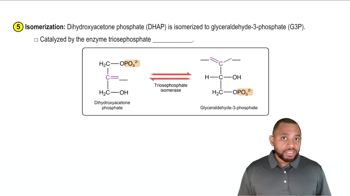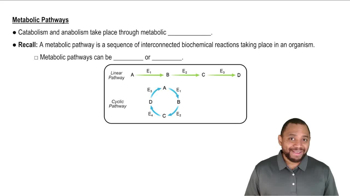Textbook Question
Many diabetics suffer blindness due to cataracts. Why is this condition associated with this disease?
26
views
 Verified step by step guidance
Verified step by step guidance



Many diabetics suffer blindness due to cataracts. Why is this condition associated with this disease?
Is the same net production of ATP observed in the complete oxidation of fructose as is observed in the complete oxidation of glucose? Why or why not?
The pathway that converts glucose to acetyl-CoA is often referred to as an “aerobic oxidation pathway.”
(b) Thinking back to Chapter 20, where does molecular oxygen enter the picture?
Which glycolysis reactions are catalyzed by the following enzymes?
a. Pyruvate kinase
Which glycolysis reactions are catalyzed by the following enzymes?
d. Phosphoglycerate mutase
Review the 10 steps in glycolysis (Figure 22.3) and then answer the following questions:
c. Which step is a dehydration?